#eu chile
Explore tagged Tumblr posts
Text



os momentos mais curtidos na minha vidd kkk
#arraial do cabo#take me back#i love you te quiero#ahi quedo brasil#pa q lo editen#buzios#capybara#buggy#proximo año#vuelvo#llevenme#tribu argentina#romario#eu chile#dios la bendiga#mucho animal#etece#romarinho#chechererereche#maguinho#bar da ana#brahma
1 note
·
View note
Text
The European Union (EU) and Chile inked on Friday a fresh partnership deal that will give the bloc greater, easier access to lithium, copper and other raw materials that are key to the transition to renewable energy sources
Chile, the world’s top copper producer and the second largest lithium miner, will drop tariffs on all imports from the EU, except sugar, and make it easier for European companies to invest in the country, the European Commission said.
The agreement means EU companies will be less hindered by Chile’s dual pricing system for domestic use or exports and potential export monopolies, while still allowing the South American country to promote domestic processing.
Chile will, in return, secure more favourable access for its exports, particularly food and professional services.
Currently, more than 60% of EU imports of the lithium used in batteries that power electric vehicles are from Chile.
Brussels considers the Latin American country as a vital strategic partner as it seeks to diversify resources imports away from China and pivot away from Russian gas.
9 Dec 22
44 notes
·
View notes
Text


bebado no elevador - foto no terraço de um prédio
Chile - 08/23
15 notes
·
View notes
Note
Vc tava esperando o blur no BR? 😭😭
estava demais! o baterista deu entrevista no começo do ano e ficou claro que eles estavam negociando, colômbia, brasil, chile e argentina. o único que não saiu foi aqui. eu sei que eles aqui não são tão grandes como na argentina e no chile, acho que nos anos 90 lá eles tiveram muito mais influência de rádio inglesa, enquanto aqui eram as clássicas porcarias americanas (red hot chilli peppers etc). mas eu sendo fã desde 97 sei que o público deles aqui cresceu muito, o cenário mudou tanto! eu vi eles no planeta terra em 13 e foi mto bom, cheio e animado, e junto com o beck (que combina mto com eles e ta voltando agora)! enfim, eles cresceram não só aqui mas em todo o mundo ainda mais nesses últimos 10 anos, inclusive no uk. acho que em parte por causa do gorillaz mas também pelas graças do streaming ao invés de só jabá de radio. eu estou muito puta com essa produtora brasileira que sempre odiei a tickets4fun, eles compraram os direitos do primavera - ano passado foi uma outra produtora - eu não sou de sp, mas meus amigos de lá falaram que ano passado o festival foi perfeito, num lugar do tamanho certo, agradável, com sombras, etc. aí essa t4f que faz(ia) o lolla (que eu detesto), pegou o primavera e jogou em interlagos (maior, onde é o lolla) pra ganhar mais dinheiro. e no fim ficou com medo do blur não lotar/era caro, chamaram the killers, que eu particularmente detesto, e que sempre tá no brasil.
eles agoram tão vazando notícia que o blur pediu 1 milhão de doláres, mas é estranho isso, pq o primeiro show que eles confirmaram na américa do sul foi um numa arena onde só cabem 14.000 pessoas em bogotá!, se fosse dividir 1 milhão por 14.000 daria, 70 mil dolares por ingresso. e mesmo pensando em buenos aires e chile fica mto caro, 1 milhão. eu acho que infelizmente o brasil deu muito azar com essa produtora interesseira incompetente e agora estão soltando isso para parecer que foi ganancia da banda.
#desculpa ficou muito longo meu post#mas tô com isso acumulado#eu fiquei mto triste#como fiquei em 2015 qdo eles tocaram em arg e chile e nao aqui#e especialmente quero que o publico deles no brasil cresça#eles são incríveis ao vivo. mas realmente não deu#eu perdi eles em 2015#mas agora que estou velha e posso pagar#vou pra buenos aires ver eles lá#no fim saiu quase exatamente a mesma coisa que gastaria indo pra sp#e ainda vou conhecer uma nova cidade latino americana#@billingualfiction#vc é fã tb?
5 notes
·
View notes
Text
La dimensión individual de la acción contra el calentamiento global, versión espagnol
Mis amigos franceses: Estudié economía/gestión DEUG/Ensette en Estrasburgo, Francia, entre 1990 y 1992. Allí compuse, entre otras cosas, los fundamentos de mi primer concierto para piano, Estrasburgo, con la calidad de Tchaikovsky. Por supuesto, sé que Francia depende en un 75 % de la energía nuclear y es la tercera potencia nuclear del mundo como medida de seguridad y esto corresponde al uso pacífico de la energía nuclear. En cuanto a esto último, espero que un paraguas nuclear común, la UE, también proteja a mi país de origen, Europa. En este sentido, tengo cierto entendimiento de que Francia ve la energía nuclear como una fuerza ecológica en transición y descuida las perspectivas a largo plazo.
En primer lugar: soy Oliver Frederic Dieck O.F.D. No se trata de un clima gay o de una loca venganza contra Dios. Se trata de la venganza de la Tierra por convertirnos a los humanos en el verdadero cáncer de la Tierra, y de cómo la Tierra puede curarse mediante un mejor comportamiento. En mi opinión, es suficiente que uno se derrita frente a mí. En resumen: ¿Qué podemos hacer a nivel individual?
Algunas ideas :
No compre cosas que en realidad estén maquilladas de verde como argumento de marketing. Consulte los costos reales de principio a fin, costos sociales y costos ambientales incluidos. Ningún otro cálculo tiene sentido para mejorarlo en la realidad.
Necesitamos añadir una placa a cada producto que muestre el coste medioambiental real, incluyendo la información, como hacemos hoy con los cigarrillos y el tabaco, con la información "Podría matarte".
Necesitamos imponer impuestos adicionales que reflejen los costos reales, incluidos los costos para la sociedad ecológica en todo el mundo, y agregar esto a los precios. Quizás si lo hacemos de esta manera pedagógica necesitemos recortar impuestos en otros lugares.
Necesitamos un mundo pacífico sin locuras como las guerras frías o calientes para tener los recursos para corregir nuestras acciones. La disuasión mutua no es el camino a seguir. No existe una alternativa real a la ley y al encarcelamiento pacífico. No necesitamos dictadores y criminales en el liderazgo mundial. Eso es todo. Luego proceda con cuidado.
La producción justo a tiempo y la producción subcontratada deben cambiar. Interdependencias, alternativas para la reducción de riesgos y motores que utilizan, por ejemplo, gas hidrógeno u otras tecnologías modernas. Entonces es posible continuar con la producción global. De otra forma no.
No creamos demasiado en las palabras de los políticos que prefieren soluciones de buena voluntad en lugar de marcos legales igualitarios que obliguen a todos los participantes del mercado a ser ecológicamente responsables. De lo contrario, no sucederá nada que pueda engañarnos durante otra década hasta nuestro final seguro, como ha ocurrido durante cuatro décadas, incluida la reubicación de la producción en las entonces prósperas China, India, etc.
Somos demasiados en este planeta de 8 mil millones de personas. Pero en los países desarrollados con mujeres estudiando y acceso gratuito a condones para sexo seguro, al menos el comportamiento de la población ha cambiado drásticamente. Los europeos estamos desapareciendo. Debemos tomar medidas personales para las próximas generaciones, también para mantener estables el sistema social y económico y los contratos intergeneracionales. Pero funcionará de la misma manera en otros lugares si también hay una modernización de la religión y la Ilustración. Creo que el desarrollo de la Tierra es la clave principal para detener el crecimiento explosivo de la Tierra.
En Alemania, mi estado natal en Europa, uno de cada siete trabajadores depende de la industria del automóvil. En Francia es diferente pero similar. Por tanto, es necesario avanzar en nuevas tecnologías responsables para nuestra prosperidad personal y la solución a nuestros problemas climáticos globales.
Comer menos carne, más huevos, pescado y aves y por supuesto frutas y verduras. Favorezca las fuentes de su zona.
No compres ropa de moda rápida basada en las últimas tendencias. La mayoría de las veces, la moda simplemente vende productos creando artificialmente una nueva tendencia cada año. Compre algo bueno en su estilo individual con calidad duradera y siéntase satisfecho con ello.
No tirar todo a la basura y reciclarlo si es necesario. La reparación es la opción. ¡Lo nuevo no es un argumento a favor de la calidad!
Manifestarte, utilizar tu red social y votar.
En resumen: deja de luchar por tu libertad individual. luchar contra las razones que nos obligan a utilizar cada vez menos nuestras libertades y, en última instancia, limitarlas a cero por responsabilidad.
Saludos cordiales, Oliver Frédéric Dieck. O.F.D para abreviar Oli.
#calentamiento#calentamiento global#fridaysforfuture#oliverfredericdieck#news#eu#ofd#nachrichten#espagna#chile#argentina#mexico#venezuela#columbia#gretatünberg#luisaneubauer#greenpeace#cop
0 notes
Text
Sempre a proposito del nemico del mio nemico è uno stronzo ma va bene così
Purtroppo leggo anche la roba rossobruna e ho giusto sotto gli occhi una roba che parla di Ucraina e Palestina e... tadam poi ci ficca in mezzo anche i trattori.
E si per una parte potrebbe essere condivisibile ma poi appunto finisce per essere immaginifica andare oltre alla comprensione dei rapporti di causa/effetto fino a renderli delle giustificazioni e dirottare l'attenzione su fregnacce moralizzanti, obiettivi fumosi.
Così come i risultati in fatto a "esportazione di democrazia" sono stati piuttosto deludenti quando si sono appoggiati i mujaheddin talebani in funziona anti-sovietica, non ci si può aspettare niente di buono a tifare Putin.
Ci sono attori stronzi sul piano internazionale.
Innanzitutto questo non vuol dire che essere stronzi sia inevitabile e che le istituzioni internazionali siano da buttare al cesso.
Ma se vivi in Russia o in Cina o in Iran... e quelli che si sono fino a ieri presentati come paladini dell'ordine mondiale ci pisciano sopra mentre ti accusano di essere "antidemocratico" non puoi aspettarti sorrisi e bacetti da gente a cui vuoi sabotare il paese... ne "rivoluzioni democratiche" (il massimo a cui puoi aspirare è un Pinochet, un Orban, uno Zelensky, i Talebani, Haftar...).
È un giochetto che per anni ha portato i suoi frutti con varie "rivoluzioni colorate", golpe e chi ne ha più ne metta, ma specialmente nei paesi abbastanza grossi da riuscire a difendere la propria autonomia economica, finisce per mostrare le corde.
Dall'altra non può essere il limite di sviluppo democratico di questi paesi. Non è che perchè cercano di organizzarti una secessione in casa o un colpo di stato... allora l'imposizione del velo o la censura diventano un "traguardo", un fattore "identitario".
Non è sbagliato il desiderio di voler aiutare questa gente nel suo percorso di emancipazione, ma semplicemente non è possibile farlo attraverso una propria classe dirigente di ipocriti ingordi.
Quindi si, forse Putin sarà "nemico" della mia classe dirigente di stronzi, ma non è mio amico.
Quindi si, criticare la propria classe dirigente, sia per la politica estera che per quella interna è un prerequisito per portare "pace e democrazia". Non è che se dico che Renzi è uno stronzo allora sono "putiniano".
Primo perchè se la propria classe dirigente se ne fotte sia di come vive la gente in Russia, Ucraina, Libia, Afghanistan, sia di come vivo io, ma persegue obiettivi in netto contrasto con quello che dice di professare, difficilmente otterrà risultati e poi perchè questi risultati possono essere ottenuti solo in maniera collettiva, con il peso diplomatico, economico e militare che in ambito internazionale è riservato agli stati. Se lo stato non rappresenta gli interessi della sua gente, non può esportare "pace e democrazia".
E secondo perchè se il proprio paese non da il buon esempio in fatto a diritto internazionale, equità e democrazia anzichè essere preso a modello diventerà un ostacolo per tutti i genuini movimenti di democratizzazione degli altri paesi.
#putin#ucraina#ukraine#rossobruni#palestine#palestina#libia#pinochet#videla#rivoluzione iraniana#afghanistan#chile#colonialismo#israele#israel#UN#ONU#EU
1 note
·
View note
Text
Der Tag in Südtirol 050224 - 1 Arbeiternachrichten
#DerTag, #Südtirol, #Italien, #EU, #Asien, #Australien, #Afrika, #Amerika, #Arbeitersicht,
Wie fälsche ich Geschichte? Der Oberst erklärt es Ihnen. Der Leiter des russischen Segments von Wikipedia stellte sich als ausländischer Agent heraus. Allgemein verlinke ich auf Wiki, wie Sie wissen. Trotzdem verweise ich oft darauf, doch bitte weiter zu recherchieren. Wohl in der Kenntnis darüber, wer das Wiki beschickt. Allein die Einträge zur DDR und deren Unterseiten, reichen leider fast für…

View On WordPress
0 notes
Text
The Real Cost of the Fashion Industry
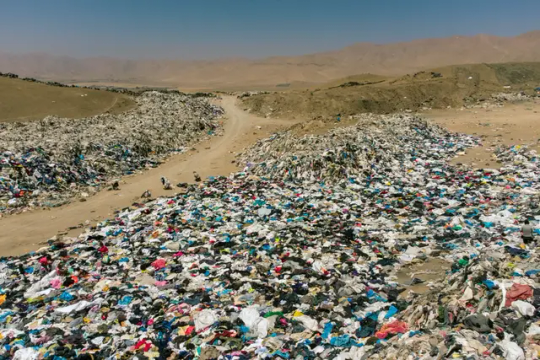
Atacama Desert, in Alto Hospicio, Iquique, Chile. (source)
The textile industry is destroying the world. The industry is wasting massive amounts of energy and materials, and polluting the air, the ground and the water supplies. It overwhelmingly exploits it's labour and extracts wealth from colonized countries, especially in Asia. I assume we all broadly understand this, but I think it's useful to have it all laid out in front of you to see the big picture, the core issues causing this destruction and find ways how to effectively move forward.
The concerning trend behind this ever-increasing devastation are shortening of trend cycles, lowering clothing prices and massive amount of wasted products. Still in year 2000 it was common for fashion brands to have two collections per year, while now e.g. Zara produces 24 collections and H&M produces 12-16 collections per year. Clothing prices have fallen (at leas in EU) 30% from 1996 to 2018 when adjusted to inflation, which has contributed to the 40% increase in clothing consumption per person between 1996 and 2012 (in EU). (source) As the revenue made by the clothing industry keep rising - from 2017 to 2021 they doubled (source) - falling prices can only be achieved with increasing worker exploitation and decreasing quality. I think the 36% degrees times clothing are used in average during the last 15 years (source) is a clear indication on the continuing drop in quality of clothing. Clothing production doubled between 2000 and 2015, while 30% of the clothes produced per year are never sold and are often burned instead (source), presumably to prevent the returns from falling due to oversupply.
These all factors are driving people to overconsume. While people in EU keep buying more clothes, they haven't used up to 50% of the clothes in their wardrobe for over a year (source). This overconsumption is only made much worse by the new type of hyper fast fashion companies like SHEIN and Temu, which are using addictive psychological tactics developed by social media companies (source 1, source 2). They are cranking up all those concerning trends I mentioned above.
Under the cut I will go through the statistics of the most significant effects of the industry on environment and people. I will warn you it will be bleak. This is not just a fast fashion problem, basically the whole industry is engaging in destructive practices leading to this damage. Clothing is one of those things that would be actually relatively easy to make without massive environmental and human cost, so while that makes the current state of the industry even more heinous, it also means there's hope and it's possible to fix things. In the end, I will be giving some suggestions for actions we could be doing right now to unfuck this mess.
Carbon emissions
The textile industry is responsible for roughly 10% of the global CO2 emissions, more than aviation and shipping industry combined. This is due to the massive supply chains and energy intensive production methods of fabrics. Most of it can be contributed to the fashion sector since around 60% of all the textile production is clothing. Polyester, a synthetic fiber made from oil which accounts for more than half of the fibers used in the textile industry, produces double the amount of carbon emissions than cotton, accounting for very large proportions of all the emissions by the industry. (source 1, source 2)
Worker exploitation
Majority of the textiles are produced in Asia. Some of the worst working conditions are in Bangladesh, one of the most important garment producers, and Pakistan. Here's an excerpt from EU Parliament's briefing document from 2014 after the catastrophic Rana Plaza disaster:
The customers of garment producers are most often global brands looking for low prices and tight production timeframes. They also make changes to product design, product volume, and production timeframes, and place last-minute orders without accepting increased costs or adjustments to delivery dates. The stresses of such policies usually fall on factory workers.
The wage exploitation is bleak. According to the 2015 documentary The True Cost less than 2% of all garment factory workers earned a living wage (source). Hourly wages are so low and the daily quotas so high, garment workers are often forced through conditions or threats and demand to work extra hours, which regularly leads to 10-12 hour work days (source) and at worst 16 hour workdays (source), often without days off. Sometimes factories won't compensate for extra hours, breaching regulations (source).
Long working hours, repetitive work, lack of breaks and high pressure leads to increased risks of injuries and accidents. Small and even major injuries are extremely common in the industry. A study in three factories in India found that 70% of the workers suffered from musculosceletal symptoms (source). Another qualitative study of female garment workers and factory doctors in Dhaka found that long hours led to eye strain, headaches, fatigue and weight loss in addition to muscular and back pains. According to the doctors interviewed, weight loss was common because the workers work such long hours without breaks, they didn't have enough time to eat properly. (source) Another study in 8 factories in India found that minor injuries were extremely common and caused by unergonomic work stations, poor organization in the work place and lack of safety gear, guidelines and training (source). Safety precautions too are often overlooked to cut corners, which periodically leads to factory accidents, like in 2023 lack of fire exists and fire extinguishers, and goods stacked beyond capacity led to a factory fire in Pakistan which injured dozens of workers (source) or like in 2022 dangerous factory site led to one dead worker and 9 injured workers (source).
Rana Plaza collapse in 2013 is the worst industrial accident in recent history. The factory building did not have proper permits and the factory owner blatantly ignored signs of danger (other businesses abandoned the building a day before the collapse), which led to deaths of 1 134 workers and injuries to 2 500 workers. The factory had or were at the time working for orders of at least Prada, Versace, Primark, Walmart, Zara, H&M, C&A, Mango, Benetton, the Children's Place, El Corte Inglés, Joe Fresh, Carrefour, Auchan, KiK, Loblaw, Bonmarche and Matalan. None of the brands were held legally accountable for the unsafe working conditions which they profited off of. Only 9 of the brands attended a meeting to agree on compensation for the victim's families. Walmart, Carrefour, Auchan, Mango and KiK refused to sight the agreement, it was only signed by Primark, Loblaw, Bonmarche and El Corte Ingles. The compension these companies provided was laughable though. Primemark demanded DNA evidence that they are relatives of one of the victims from these struggling families who had lost their often sole breadwinner for a meager sum of 200 USD (which doesn't even count for two months of living wage in Bangladesh (source)). This obviously proved to be extremely difficult for most families even though US government agreed to donate DNA kits. This is often said to be a turning point in working conditions in the industry, at least in Bangladesh, but while there's more oversight now, as we have seen, there's clearly still massive issues. (source 1, source 2)
One last major concern of working conditions in the industry I will mention is the Xinjiang raw cotton production, which is likely produced mainly with forced labour from Uighur concentration camps, aka slave labour of a suspected genocide. 90% of China's raw cotton production comes from Xinjiang (source). China is the second largest cotton producer in the world, after India, accounting 20% of the yearly global cotton production (source).
Pollution
Synthetic dyes, which synthetic fibers require, are the main cause of water pollution caused by the textile industry, which is estimated to account for 20% of global clean water pollution (source). This water pollution by the textile industry is suspected of causing a lot of health issues like digestive issues in the short term, and allergies, dermatitis, skin inflammation, tumors and human mutations in the long term. Toxins also effect fish and aquatic bacteria. Azo dyes, one of the major pollutants, can cause detrimental effects to aquatic ecosystems by decreasing photosynthetic activity of algae. Synthetic dyes and heavy metals also cause large amounts of soil pollution. Large amounts of heavy metals in soil, which occurs around factories that don't take proper environmental procautions, can cause anaemia, kidney failure, and cortical edoem in humans. That also causes changes in soil texture, decrease in soil microbial diversity and plant health, and changes in genetic structure of organisms growing in the soil. Textile factory waste water has been used for irrigation in Turkey, where other sources of water have been lacking, causing significant damage to the soil. (source)
Rayon produced through viscose process causes significant carbon disulphide and hydrogen sulphide pollution to the environment. CS2 causes cardiovascular, psychiatric, neuropsychological, endocrinal and reproductive disorders. Abortion rates among workers and their partners exposed to CS2 are reported to be significantly higher than in control groups. Many times higher amounts of sick days are reported for workers in spinning rooms of viscose fiber factories. China and India are largest producers of CS2 pollution, accounting respectively 65.74% and 11,11% of the global pollution, since they are also the major viscose producers. Emission of CS2 has increased significantly in India from 26.8 Gg in 2001 to 78.32 Gg in 2020. (source)
Waste
The textile industry is estimated to produce around 92 million tons of textile waste per year. As said before around 30% of the production is never sold and with shortening lifespans used the amount of used clothing that goes to waster is only increasing. This waste is large burned or thrown into landfills in poor countries. (source) H&M was accused in 2017 by investigative journalists of burning up to 12 tonnes of clothes per year themselves, including usable clothing, which they denied claiming they donated clothing they couldn't sell to charity instead (source). Most of the clothing donated to charity though is burned or dumbed to landfills (source).
Most of the waste clothing from rich countries like European countries, US, Australia and Canada are shipped to Chile (source) or African countries, mostly Ghana, but also Burkina Faso and Côte d'Ivoire (source). There's major second-hand fashion industries in these places, but most of the charity clothing is dumbed to landfills, because they are in such bad condition or the quality is too poor. Burning and filling landfills with synthetic fabrics with synthetic dyes causes major air, water and soil pollution. The second-hand clothing industry also suppresses any local clothing production as donated clothing is inherently more competitive than anything else, making these places economically reliant on dumbed clothing, which is destroying their environment and health, and prevents them from creating a more sustainable economy that would befit them more locally. This is not an accident, but required part of the clothing industry. Overproduction let's these companies tap on every new trend quickly, while not letting clothing the prices in rich countries drop so low it would hurt their profits. Production is cheaper than missing a trend.
Micro- and nanoplastics
There is massive amounts of micro- and nanoplastics in all of our environment. It's in our food, drinking water, even sea salt (source). Washing synthetic textiles accounts for roughly 35% of all microplastics released to the environment. It's estimated that it has caused 14 million tonnes of microplastics to accumulate into the bottom of the ocean. (source)
Microplastics build up into the intestines of animals (including humans), and have shown to probably cause cause DNA damage and altered organism behavior in aquatic fauna. Microplastics also contain a lot of the usual pollutants from textile industry like synthetic dyes and heavy metals, which absorb in higher quantities to tissues of animals through microplastics in the intestines. Studies have shown that the adverse effect are higher the longer the microplastics stay in the organism. The effects cause major risks to aquatic biodiversity. (source) The health effects of microplastics to humans are not well known, but studies have shown that they could have adverse effects on digestive, respiratory, endocrine, reproductive and immune systems. (source)
Microplastics degrade in the environment even further to nanoplastics. Nanoplastic being even smaller are found to enter blood circulation, get inside cells and cross the blood-brain barrier. In fishes they have been found to cause neurological damage. Nanoplastics are also in the air, and humans frequently breath them in. Study in office buildings found higher concentration of nanoplastics in indoor air than outdoor air. Inside the nanoplastics are likely caused mostly by synthetic household textiles, and outdoors mostly by car tires. (source) An association between nanoplastics and mitochondrial damage in human respiratory cells was found in a recent study. (source)
Micro and nano plastics are also extremely hard to remove from the environment, making it even more important that we reduce the amount of microplastics we produce as fast as possible.
What can we do?
This is a question that deserves it's own essays and articles written about it, but I will leave you with some action points. Reading about these very bleak realities can easily lead to overwhelming apathy, but we need to channel these horrors into actions. Whatever you do, do not fall into apathy. We don't have the luxury for that, we need to act. These are industry wide problems, that simply cannot be fixed by consumerism. Do not trust any clothing companies, even those who market themselves as ethical and responsible, always assume they are lying. Most of them are, even the so called "good ones". We need legislation. We cannot allow the industry to regulate itself, they will always take the easy way out and lie to their graves. I will for sure write more in dept about what we can do, but for now here's some actions to take, both political and individual ones.
Political actions
Let's start with political actions, since they will be the much more important ones. While we are trying to dismantle capitalism and neocolonialism (the roots of these issues), here's some things that we could do right now. These will be policies that we should be doing everywhere in the world, but especially rich countries, where most of the clothing consumption is taking place. Vote, speak to others, write to your representative, write opinion pieces to your local papers, engage with democracy.
Higher requirements of transparency. Right now product transparency in clothing is laughably low. In EU only the material make up and the origin country of the final product are required to be disclosed. Everything else is up to the company. Mandatory transparency is the only way we can force any positive changes in the production. The minimum of transparency should be: origin countries of the fibers and textiles in the product itself; mandatory reports of the lifecycle emissions; mandatory reports of whole chain of production. Right now the clothing companies make their chain of production intentionally complex, so they have plausible deniability when inevitably they are caught violating environmental or worker protection laws (source). They intentionally don't want to be able to track down their production chain. Forcing them to do so anyway would make it very expensive for them to keep up this unnecessarily complex production chain. These laws are most effective when put in place in large economies like EU or US.
Restrictions on the use of synthetic fibers. Honestly I think they should be banned entirely, since the amount of microplastics in our environment is already extremely distressing and the other environmental effects of synthetic fibers are also massive, but I know there are functions for which they are not easily replaced (though I think they can be replaces in those too, but that's a subject of another post), so we should start with restrictions. I'm not sure how they should be specifically made, I'm not a law expert, but they shouldn't be used in everyday textiles, where there are very easy and obvious other options.
Banning viscose. There are much better options for viscose method that don't cause massive health issues and environmental destruction where ever it's made, like Lyocell. There is absolutely no reason why viscose should be allowed to be sold anywhere.
Governmental support for local production by local businesses. Most of the issues could be much more easily solved and monitored if most clothing were not produced by massive global conglomerations, but rather by local businesses that produce locally. All clothing are made by hand, so centralizing production doesn't even give it advantage in effectiveness (only more profits for the few). Producing locally would make it much more easier to enforce regulations and it would reduce production chains, making production more effective, leaving more profits into the hands of the workers and reducing emissions from transportation. When the production is done by local businesses, the profits would stay in the producing country and they could be taxed and utilized to help the local communities. This would be helpful to do in both exploited and exploiter countries. When done in rich countries who exploit poorer ones, it would reduce the demand for exploitation. In poor countries this is not as easily done, since poor means they don't have money to give around, but maybe this could be a good cause to put some reparations from colonizers and global corporations, which they should pay.
Preventing strategic accounting between subsidiaries and parent companies. Corporate law is obviously not my area of expertise, but I know that allowing corporations to move around the accounting of profits and losses between subsidiaries and parent companies in roughly 1980s, was a major factor in creating this modern global capitalist system, where corporations can very easily manipulate their accounting to utilize tax heavens and avoid taxes where they actually operate, which is how they are upholding this terrible system and extracting the profits from the production countries. How specifically this would be done I can't tell because again I know shit about corporate law, so experts of that field should plan the specifics. Overall this would help deal with a lot of other problems than just the fashion industry. Again for it to be effective a large economic area like EU or US should do this.
Holding companies accountable for their whole chain of production. These companies should be dragged to court and made to answer for the crimes they are profiting of off. We should put fear back into them. This is possible. Victims of child slavery are already doing this for chocolate companies. If it's already not how law works everywhere, the laws should be changed so that the companies are responsible even if they didn't know, because it's their responsibility to find out and make sure they know. They should have been held accountable for the Rana Plaza disaster. Maybe they still could be. Sue the mother fuckers. They should be afraid of us.
Individual actions
I will stress that the previous section is much more important and that there's no need to feel guilty for individual actions. This is not the fault of the average consumer. Still we do need to change our relationship to fashion and consumption. While it's not our fault, one of the ways this system is perpetuated, is by the consumerist propaganda by fashion industry. And it is easier to change our own habits than to change the industry, even if our own habits have little impact. So these are quite easy things we all could do as we are trying to do bigger change to gain some sense of control and keep us from falling to apathy.
Consume less. Better consumption will not save us, since consumption itself is the problem. We consume too much clothing. Don't make impulse purchases. Consider carefully weather you actually need something or if you really really want it. Even only buying second-hand still fuels the industry, so while it's better than buying new, it's still better to not buy.
Take proper care of your clothing. Learn how to properly wash your clothing. There's a lot of internet resources for that. Never wash your wool textiles in washing machine, even if the textile's official instructions allow it. Instead air them regularly, rinse them in cool water if they still smell after airing and wash stains with water or small amount of (wool) detergent. Never use fabric softener! It damages the fabrics, prevents them from properly getting clean and is environmentally damaging. Instead use laundry vinegar for making textiles softer or removing bad smells. (You can easily make laundry vinegar yourself too from white vinegar and water (and essential oils, if you want to add a scent to it) which is much cheaper.) Learn how to take care of your leather products. Most leather can be kept in very good condition for a very long time by occasional waxing with beeswax.
Use the services of dressmakers and shoemakers. Take your broken clothing or clothing which doesn't fit anymore to your local dressmaker and ask them if they can do something about it. Take your broken and worn leather products to your local shoemaker too. Usually it doesn't cost much to get something fixed or refitted and these expert usually have ways to fix things you couldn't even think of. So even if the situation with your clothing or accessory seems desperate, still show it to the dressmaker or shoemaker.
If it's extremely cheap, don't buy it. Remember that every clothing is handmade. Only a small fraction of the cost of the clothing will be paying the wages of the person who made it with their hands. If a shirt costs 5 euros (c. 5,39 USD), it's sewer was only payed mere cents for sewing it. I'm not a quick sewer and it takes me roughly 1-2 hours to cut, prepare and sew a simple shirt, so I'm guessing it would take around half an hour to do all that for a factory worker on a crunch, at the very least 15 minutes. So the hourly pay would still be ridiculously low. However, as I said before, the fact that the workers in clothing factories get criminally low pay is not the fault of the consumer, so if you need a clothing item, and you don't have money to buy anything else than something very cheep, don't feel guilty. And anyway expensive clothing in no way necessarily means reasonable pay or ethical working conditions, cheep clothing just guarantee them.
Learn to recognize higher quality. In addition to exploitation, low price also means low quality, but again high price doesn't guarantee high quality. High quality allows you to buy less, so even if it's not as cheep as low quality, if you can afford it, when you need it, it will be cheaper in long run, and allows you to consume less. Check the materials. Natural fibers are your friends. Do not buy plastic, if it's possible to avoid. Avoid household textiles from synthetic fibers. Avoid textiles with small amounts of spandex to give it stretch, it will shorten the lifespan of the clothing significantly as the spandex quickly wears down and the clothing looses it's shape. Also avoid clothing with rubber bands. They also loose their elasticity very quickly. In some types of clothing (sport wear, underwear) these are basically impossible to avoid, but in many other cases it's entirely possible.
Buy from artisans and local producers, if you can. As said better consumption won't fix this, but supporting artisans and your local producers could help keep them afloat, which in small ways helps create an alternative to the exploitative global corporations. With artisans especially you know the money goes to the one who did the labour and buying locally means less middlemen to take their cut. More generally buy rather from businesses that are located to the same country where the production is, even if it's not local to you. A local business doesn't necessarily produce locally.
Develop your own taste. If you care about fashion and style, it's easy to fall victim to the fashion industry's marketing and trend cycles. That's why I think it's important to develop your personal sense of style and preferences. Pay attention at what type of clothes are comfortable to you. Go through your wardrobe and track for a while which clothing you use most and which least. Understanding your own preferences helps you avoid impulse buying.
Consider learning basics of sewing. Not everyone has the time or interest for this, but if you in anyway might have a bit of both, I suggest learning some very simple and basic mending and reattaching a button.
Further reading on this blog: How to see through the greenwashing propaganda of the fashion industry - Case study 1: Shein
Bibliography
Academic sources
An overview of the contribution of the textiles sector to climate change, 2022, L. F. Walter et al., Frontiers in Environmental Science
How common are aches and pains among garment factory workers? A work-related musculoskeletal disorder assessment study in three factories of south 24 Parganas district, West Bengal, 2021, Arkaprovo Pal et al., J Family Med Prim Care
Sewing shirts with injured fingers and tears: exploring the experience of female garment workers health problems in Bangladesh, 2019, Akhter, S., Rutherford, S. & Chu, C., BMC Int Health Hum Rights
Occupation Related Accidents in Selected Garment Industries in Bangalore City, 2006, Calvin, Sam & Joseph, Bobby, Indian Journal of Community Medicine
A Review on Textile and Clothing Industry Impacts on The Environment, 2022, Nur Farzanah Binti Norarmi et al., International Journal of Academic Research in Business and Social Sciences
Carbon disulphide and hydrogen sulphide emissions from viscose fibre manufacturing industry: A case study in India, 2022, Deepanjan Majumdar et al., Atmospheric Environment: X
Microplastics Pollution: A Brief Review of Its Source and Abundance in Different Aquatic Ecosystems, 2023, Asifa Ashrafy et al., Journal of Hazardous Materials Advances
Health Effects of Microplastic Exposures: Current Issues and Perspectives in South Korea, 2023, Yongjin Lee et al., Yonsei Medical Journal
Nanoplastics and Human Health: Hazard Identification and Biointerface, 2022, Hanpeng Lai, Xing Liu, and Man Qu, Nanomaterials
Other sources
The impact of textile production and waste on the environment (infographics), 2020, EU
Chile’s desert dumping ground for fast fashion leftovers, 2021, AlJazeera
Fashion - Worldwide, 2022 (updated 2024), Statista
Fashion Industry Waste Statistics & Facts 2023, James Evans, Sustainable Ninja (magazine)
Everything You Need to Know About Waste in the Fashion Industry, 2024, Solene Rauturier, Good on You (magazine)
Textiles and the environment, 2022, Nikolina Šajn, European Parliamentary Research Service
Help! I'm addicted to secondhand shopping apps, 2023, Alice Crossley, Cosmopolitan
Addictive, absurdly cheap and controversial: the rise of China’s Temu app, 2023, Helen Davidson, Guardian
Workers' conditions in the textile and clothing sector: just an Asian affair? - Issues at stake after the Rana Plaza tragedy, 2014, Enrico D'Ambrogio, European Parliamentary Research Service
State of The Industry: Lowest Wages to Living Wages, The Lowest Wage Challenge (Industry affiliated campaign)
Fast Fashion Getting Faster: A Look at the Unethical Labor Practices Sustaining a Growing Industry, 2021, Emma Ross, International Law and Policy Brief (George Washington University Law School)
Dozens injured in Pakistan garment factory collapse and fire, 2023, Hannah Abdulla, Just Style (news media)
India: Multiple factory accidents raise concerns over health & safety in the garment industry, campaigners call for freedom of association in factories to ‘stave off’ accidents, 2022, Jasmin Malik Chua, Business & Human Rights Resource Center
Minimum Wage Level for Garment Workers in the World, 2020, Sheng Lu, FASH455 Global Apparel & Textile Trade and Sourcing (University of Delaware)
Rana Plaza collapse, Wikipedia
Buyers’ compensation for Rana Plaza victims far from reality, 2013, Ibrahim Hossain Ovi, Dhaka Tribune (news media)
World cotton production statistics, updated 2024, The World Counts
Dead white man’s clothes, 2021, Linton Besser, ABC News
#fashion#fashion industry#sustainability#sustainable fashion#sustainable clothing#environment#climate change#i will be continuing the series of how to see through fashion industry propaganda at some point#i just felt compelled to write this because i feel like people so often miss the forest for the trees in this conversation
493 notes
·
View notes
Note
AGORA QUE EU VOLTEI A ASSISTIR FUTEBOL, EU NÃO PARO MAIS 😭😭😭 POR QYE A NOSSA SELEÇÃO FAZ ISSO CONOSCO
O URUGUAI É MUIGO BURRO

EU NAO TO VENDO EU NAO VOU VER NADA DE FUTEBOL NUNCA MAIS EU PREFIRO MORRER
#torço pra o chile depois do brasil#eu gosto bastante do futebol uruguaio eles ficam em terceiro hoje em dia#soph❤️#vito also talks about football
1 note
·
View note
Note
Oiê poliii 🥹 Queria te pedir uma coisa,de artista pra amiga da artista, sinta-se a vontade pra aceitar ou não ok! Queria pedir pra vc reblogar um post de uma amiga artista minha ,ela é latina americana (q nem a gente :P) do Chile. Ela disse q tá precisando muito de dinheiro agora :( e ela é uma pessoa tão boa e muito legal,sempre responde os seguidores e é muito carinhosa 🥹 eu tô na busca de ajudar ela com mais reblogues pq ela n conseguiu muito alcance 😭 desculpa se eu estiver sendo chata ou atrapalhando 😭😭 fique a vontade pra reblogar ou não okie?
P.s: TE AMO VC ME FEZ SHIPPAR PANJOSE AAAAAAAAA
Aqui o link :
https://www.tumblr.com/skiesforest/762339309275824128/still-available-guys-help-me-sharing?source=share
OI, QUERIDA!!! Chata nada! Obrigada pelo carinho! 💖💖💖 Reblogado tbm o post da sua amiga!

#ask#suteki-hoshi#espero que ajude mas o engajamento do tumblr é dificil msm especialmente pra commissions
26 notes
·
View notes
Text
Some good news to get you through
As someone super into history and current events, everything always sucks so I just want to make a little masterlist of some glimmers of hope. Will try to make multiple of these.
I shopped around for all of these, but this website and this website offers happy stories all in one place for those who don't have the time.
Colombia outlaws child marriage after 17-year campaign
Jordan Recognized as First in the World to Eradicate Leprosy
Norway, Paraguay, Antigua and Barbuda join the Global Alliance Against Hunger and Poverty
Orran Gala Raises $400,000 for Armenia’s Most Vulnerable
Hanover firefighter creates ‘Belize Heroes’ to donate lifesaving equipment to home country
Norway’s Kon-Tiki Museum returns artifacts to Chile’s remote Easter Island
Minneapolis man's murder conviction vacated after 16 years
Hiking group for Muslim women breaks barriers as hundreds flock to the outdoors
Scientists find a 35,000-year-old saber-toothed kitten in the Siberian permafrost
Tupelo Preschool Teacher Donates Organ to Student
Author Katherine Rundell donates royalties to climate charities in Trump protest
Pan-Mass Challenge Raises Record $75 Million for Dana-Farber Cancer Institute
Texas woodpecker no longer endangered after 54 years
Researchers discover 'lost' frog species in the Andes after over a century
More states are adopting laws to protect children of family vloggers
A 19-Year-Old Who Spent Her Childhood In Foster Care Was Finally Adopted By A Former Caseworker
Dolly Parton Gifts $4.5 Million to Nashville Public Library
New Mexico sees nearly 10% more first-year college students, bucking national trend
21-Year-Old Raising His 4 Siblings Since Their Mom Died Surprised With $40K and a New Car
Easy-fit prosthetics offer hope to thousands of Gaza amputees
UNM alumni hike tallest peaks in Ecuador to make prosthetic care more accessible
London charity helps young mums thrive
Italian charity sends 15 tonnes of humanitarian aid to Gaza via Cyprus
Climate report shows the largest annual drop in EU greenhouse gas emissions for decades
Washingtonians defend the Climate Commitment Act
Voters decide MN Lottery will keep funding environmental causes
Finnish fathers taking nearly double length of paternity leave since 2022 reform
Oysters reintroduced to Firth of Forth appear to be 'thriving'
German union says auto and engineering workers to get 5.5% wage rise
Seaweed farming brings hope to Kenyan villagers hit by climate change
Previously extinct Cape Water Lily restored at False Bay Nature Reserve
From landfill to limelight, Ghana waste entrepreneurs win Earthshot Prize
A derogatory term for Native women will be removed from place names across California
Texas Native Health expands facility to better serve the state's Indigenous community
Borneo’s ‘omen birds’ find a staunch guardian in Indigenous Dayak Iban elders
African cinema takes to global stage with diverse storytelling
Maori haka in NZ parliament to protest at bill to reinterpret founding treaty
Animal welfare group works to rescue lions, pets in Lebanon
Inside a Massachusetts studio showcasing the work of artists with disabilities
#mental health#positivity#self care#mental illness#self help#recovery#news#current events#politics#us politics#disability#disabled#neurodivergent#neurodiversity#autism#autistic#lgbt#lgbtq#art#indigenous#aesthetic#cute#body positivity#body positive#punk#positive reminders#positive vibes#self esteem#self worth#self improvement
27 notes
·
View notes
Note
mds o kuku ta um sabor nessa camisa branca vontade de ir dar um nhac nesse braço dele TRANQUEM AS PORTAS DO HOTEL NO CHILE
https://x.com/pipeotanoup/status/1798187321679892497?t=wvlkIJhHPOWbnXAhdRDkhQ&s=19
nossa vsf esses dois juntos vey eles são doidos?????? como assim eles vão ser altos e gostosos um do lado do outro e não me comer simultaneamente sabe acho meio nada a ver isso…….. e essa camisa branca me passou uma vibe professor 😔😔😔😔 que delícia mas deus é perfeito em todas as coisas mesmo né gente não me colocou pra sentar nesse homem pq ele sabe que nem o esteban nem o mundo ia aguentar a 🐱💥 que ia ser tudo reduziria a PÓ pq meu deus do céu como eu queria ah se a gente pudesse….


#ctalks 🗣#esteban kukuriczka#tô muito triste gente queria dar pra ele…#acordei no meio da madrugada então pensei hm pq não vir aqui e falar atrocidades? 😌✨
44 notes
·
View notes
Text
Venezuela has been polarized almost since the election of Hugo Chávez in 1998, but last Sunday’s stolen presidential vote shows the rift has changed. Previously, it was between middle- and upper-class citizens who opposed Presidents Chávez and Nicolás Maduro and those leaders’ base, the poor. Now the rift is between a majority of citizens and Maduro’s discredited, autocratic government. Residents from the poor neighborhoods that ring Caracas are pouring into the capital to protest alongside the city’s better-off residents. To suppress them, Maduro and his government are unleashing their security apparatus, and as of Wednesday, government security and militia forces had arrested hundreds of protesters and killed more than a dozen people.
This is not a “civil war,” as Venezuelan Attorney General Tarek William Saab recently attempted to portray it—at least not in the traditional sense of citizens against fellow citizens. Instead, we are seeing the rising up of citizens against a government that, according to credible exit polls and opposition tallies of more than 80 percent of the ballots, stole an election from a popular presidential candidate, Edmundo González. There is no hard evidence to support the claim of the National Electoral Council (CNE)—packed with Maduro loyalists—that Maduro was reelected with 51 percent of the vote, to González’s 44 percent. And what’s certain is the division and turmoil revealed this week after the election are inimical to the social capital, stability, and predictability needed to rebuild the country’s battered economy.
Venezuelan citizens lined up for hours to cast their vote in Sunday’s presidential election. This demonstration of renewed faith in democracy followed decades of declining participation in voting, owing, in part, to the opposition’s abstentions. In preelection public opinion polls, more than 80 percent of registered voters said they wanted political change, and an almost equal number expressed an intent to vote. But Maduro never had any intention of allowing himself to be voted out of power.
Before and after, his government has displayed a refusal to adhere to standards of electoral transparency. Several months before the balloting, the CNE disinvited an election observation mission from the European Union. Days before the vote, Venezuelan authorities refused to allow ex-presidents from Argentina, Bolivia, Mexico, and Panama to fly to the country observe the elections. And after governments from Argentina, Chile, Costa Rica, the Dominican Republic, Ecuador, Panama, Peru, and Uruguay questioned the results, the Maduro government announced that it would shutter those countries’ embassies in Caracas. The willingness to break diplomatic practice has shocked the foreign-policy community, especially in Venezuela’s own neighborhood; solidarity and dialogue are firmly ingrained in the region’s diplomatic DNA.
Of course, fellow autocratic governments in China, Cuba, Iran, Nicaragua, and Russia immediately recognized Maduro’s win. For some of them, like China, the reasons are in part financial—Beijing wants to keep its access to Venezuela’s oil. For others, it is more out of solidarity in defying international scrutiny of human rights and elections. Meanwhile, Brazil, Chile, Colombia, the EU, and the United States among others are calling on the government to release the paper ballots. But if the CNE never turns over the paper trail or if the evidence is demonstrated to be falsified, what those governments will or even can do is unclear. (A majority of governments denounced Maduro’s last election in 2018 as fraudulent with little effect, but since the opposition had boycotted the contest, the claims carried less import.)
Protests are likely to grow in the coming weeks, and the likelihood of broad international isolation—what one pro-government investor said at a recent conference in London would be just “some turbulence”—now looks more like a crash. Investors who bought distressed bonds after Venezuela defaulted on its debt are watching bond prices drop after rising in the weeks before the election. Energy companies in the United States and Europe that benefited from the U.S. liberalization of sanctions are now facing a possible return of those sanctions, and as Britain, the EU, and the United States discuss how to best punish the government and individuals within it for failing to meet Venezuela’s commitments under the 2023 Barbados Agreement to hold free and fair elections, there will likely be more targeted personal sanctions, too.
None of this bodes well for Maduro’s ability to maintain even his limited base of popular support, which includes corrupt businesses, politicians, and security officers. Further repression will likely follow. While China and Russia have pledged their support for the Maduro government, neither has the capacity to keep Venezuela’s battered economy afloat.
Whatever happens to Maduro’s government, the chaos and the economic pain it will inflict likely spell the end of the United Socialist Party of Venezuela (PSUV) and the Bolivarian project that Chavez founded in 1998. There was a slim, perhaps unrealistic, hope among international diplomats and observers that more forward-thinking members of the government and party would consider their political future in a democratic Venezuela should a popular uproar follow a stolen election. That hope has vanished. For the majority of Venezuelans who supported González and had their hopes dashed, the PSUV will be associated with theft and cruelty, even more so than in the past. The legacy of Chavismo will be remembered for this.
The situation in Venezuela cries out for international mediation to restore order and defend the rights of Venezuelan citizens. The center-left governments of Colombia and Brazil could be well positioned to convene such a process.
But next steps are deeply unclear. Nor is it obvious after the Maduro government cut ties to neighboring governments that dared to question the results whether Brazil and Colombia would be able to maintain ties to the strategically thin-skinned PSUV regime should they criticize it.
The violence in recent days committed by state security forces and pro-government private militias—the colectivos—should preclude the government from staying in office, even if the opposition is declared victorious and is constitutionally sworn in on Jan. 10, 2025. Oddly, the Maduro government has called for a national dialogue. But an immediate change of government is necessary, if even a transitional government. That will first require understanding that instead of simple political polarization or even a civil war, a government has instead waged war on its own citizens and their popular will.
35 notes
·
View notes
Text
💋┊SEMPRE FOI AMOR !!

ᡣ𐭩 ─ andy pruss × leitora.
ᡣ𐭩 ─ gênero: divertido. 🩰
ᡣ𐭩 ─ número de palavras: 1.330.
ᡣ𐭩 ─ notas da autora: oioi meus aneizinhos de saturno, como vão? espero que gostem viu? eu particularmente amei escrever esse cenário sobre o andy 😣😖🤧💞💞 se cuidem e bebam água, um beijo. 😽💌

Desde que conheceu Andy a vida de S/n nunca mais foi a mesma. Eles tiveram o primeiro contato através de uma live que um certo aquele fez na Twitch.
─ Vem pro Brasil com as las brazucas... ─ Ele lê um comentário da live e encara a câmera. ─ Eu gostaria muito de ir pra lá.
Sorrindo e surtando deitada em sua cama, a brasileira prontamente saiu da transmissão por um momento para mandar algumas mensagens para Andy, que surpreendente respondeu ela minutos depois, e ficaram jogando conversa fora até o alto da madrugada.
Eles ficaram nessa por algumas semanas, até o argentino a convidar para ir em um evento no Chile para a conhecer pessoalmente.
Sem pensar duas vezes, a garota aceitou e, como já havia torrado seu salário do mês inteiro, fez um empréstimo que doeu muito quando ela viu que teria que pagar quase o dobro no próximo mês.
─ Estou muito ansioso pra conhecer você, chiquita linda. Mal posso esperar pro evento acabar pra gente poder conversar finalmente! ─ Andy dizia por videochamada com um sorriso fofo nos lábios, olhando para a garota.
─ Eu também estou ansiosa, Andy. E confesso que você me surpreendeu muito quando começou a conversar em português comigo, do nada.
Rindo um pouco alto fazendo seus olhos se fecharem um pouquinho, Pruss concorda com a cabeça algumas vezes e volta a se enquadrar na câmera do celular.
─ Você disse que meu... Que o meu o que? ─ Ele pergunta mais pra si mesmo do que pra garota fazendo uma carinha estranha, juntando as sobrancelhas. ─ Ah sim! Que o meu sotaque é fofo e afastado, não! Arrastado. Isso! Você disse que o meu sotaque é fofo e arrastado, então vou tentar ao máximo falar em português com a minha menina veneno brasileira. ─ Andy diz e quando olha para a câmera novamente solta um suspiro longo.
S/n que apenas o escutava sorrindo disfarçadamente mas surtando por dentro, também soltou um suspiro longo.
─ Você é muito linda. ─ Fala Andy quebrando o silêncio aconchegante.
─ Você também, Andy. ─ Diz sincera a garota, se sentando na cama.
─ Sério, esse evento podia ser logo amanhã. Eu quero muito te ver. ─ Andy faz um biquinho e vira de lado na cama, se cobrindo com o cobertor e aconchegando sua cabeça melhor no travesseiro.
─ Falando assim parece que você é meu namorado. ─ A moça fala com um sorriso largo no rosto.
Com um sorriso ladino, o homem aproxima mais o celular de seu rosto e sussurra no autofalante:
─ É porque eu quero ser o seu namorado, chiquita linda. É só você aceitar o meu pedido.
Tentando não transparecer felicidade alguma com a fala de Pruss, a garota se faz de desentendida e também aproxima o rosto da câmara, fala do baixinho:
─ Que pedido é esse que eu nunca nem vi ou ouvi, amor? Você tem que ser mais específico.
Mordendo os lábios, o argentino responde anda murmurando:
─ Pensando bem vou deixar o pedido pra fazer quando a gente se conhecer pessoalmente. Boa noite minha futura namorada, vai dormir bem gostosinho que amanhã a gente conversa mais. Um beijo, amor … eu te amo.
Sorrindo, se sentindo completamente apaixonada por aquele garoto que só o conhecia há dois meses, a brasileira acaba respondendo de modo gentil e tímido:
─ Está bem, amor. Eu te amo também.
Depois dessa breve conversa ─ de quase três horas ─ os dois não conseguiram dormir. Passaram quase vinte minutos antes de pegarem no sono pensando nas milhões de coisas que poderiam fazer quando se conhecerem ou quando já estiverem em um relacionamento.
E quando chegou o dia da viagem, S/n, que estava bastante empolgada com tudo, foi uma das primeiras pessoas a chegar no aeroporto na parte da manhã, e como o seu voo era às oito, ficou algumas horas conversando com uma senhora adorável que iria passar uma temporada no Chile também. Seu nome era Ana…
S/n esperava que bastante coisas iriam acontecer assim que o avião pousasse em Santiago. Sua mala se perder entre as demais, o segurança a barrar, ela esquecer de como se fala espanhol e por aí vai… Mas nunca passou na cabeça dela que Andy e mais alguns meninos estavam esperando ela na saída do desembarque.
─ Surpresa! ─ Gritou em uníssono Matías, Simón, Nando Contigiani, Valentino, Felipe Otaño e é claro, o Andy.
─ Gente, puta que pariu, que isso? ─ Exclamou assustada a brasileira quase fazendo sua mala cair.
─ Viemos acompanhar nosso cowboy Andy para conhecer a namorada dele. ─ Otaño diz indo de encontro a garota, a abraçando. ─ Tudo bem linda? ─ Pergunta o argentino com um sorriso encantador nos lábios e S/n, ainda processando o que estava acontecendo, apenas concordou com a cabeça.
─ Verdade, o cara desde que te conheceu não para de falar de você. ─ Simón fala também indo abraçar a brasileira, pegando as malas das mãos dela, levando.
─ Se fosse só isso... Você acredita que o Andy até começou a fazer mais aulas de português no Duolingo só pra te agradar? ─ Disse Valentino ficando quase nas pontas dos pés para abraçar a garota, que segurou o riso.
─ E graças a minha belíssima pessoa, ele está por dentro dos hits brasileiros. Fala aí Nando, só escuto música de qualidade né? ─ Matías começa a dizer dando uma pequena cotovelada em Contigiani antes de também ir abraçar a garota.
─ Só se for de qualidade duvidosa. E digo mais, a maioria são reggae daquela banda naturalidade, que são até boas… ─ Contigiani diz cruzando os braços.
Matias para de abraçar a mulher, balançando ela de um lado para o outro e se vira rapidamente para Nando.
─ Se diz Natiruts, seu passarinho sem asa. ─ Recalt corrige o amigo e observa ele se aproximar para também abraçar a moça.
─ Olha, a gente vai esperar vocês no carro, tá? ─ Valentino avisa já indo com os meninos para perto dos táxis, deixando S/n e Andy a sós.
Respirando fundo, Andy sorri olhando para S/n. Seus olhos brilhavam e ele sentia seu coração bater mais rápido só de finalmente estar perto dela.
─ Eu te juro que se tivesse um anel comigo agora te pediria em namoro aqui mesmo. ─ Ele diz sem jeito, chegando mais perto da garota, que colocou uma mecha de cabelo atrás da orelha.
─ Não seja por isso. ─ A brasileira diz tirando dois anéis pratas de seu indicador de maneira calma, entregando um para Andy.
Ambos se arrepiaram com o toque e em segundos ele já estava ajoelhado na frente dela.
─ Você aceita namorar comigo? ─ Pergunta Andy tentando não gaguejar e tentando ignorar o olhar de algumas pessoas ao redor.
─ É claro que eu aceito, Andy! ─ S/n sorri emocionada e assim que ele termina de colocar o anel no anelar dela, a mesma coloca o anel que segurava no anelar dele.
Sorrindo um para o outro, é Andy que toma a iniciativa e cola seus lábios em um selinho demorado, fazendo eles se afastarem levemente assustados após escutarem os gritos e aplausos de longe. Eram os meninos, colegas de elenco de Pruss, batendo palma de felicidade para o novo casal latino.
─ Finalmente veio aí, agora oficialmente estou segurando vela! ─ Valentino Alonso fala em voz alta enquanto ainda batia palma, observando S/n e seu namorado se aproximava.
─ Tamanho de uma vela você já tem né Tino? Só falta você se auto segurar. ─ Matías diz como se fosse a coisa mais óbvia possível, arrancando risada do pessoal.
No final de tudo, sempre foi amor desde o primeiro contato que Andy e S/n tiveram. E agora a brasileira tinha certeza: a sua vida nunca mais vai ser a mesma após tudo isso que está acontecendo com ela no bom e maravilhoso sentido, é claro!
#imagines da nana 💡#andy pruss#andy pruss fanfic#ando pruss imagine#andy pruss smut#andy pruss x you#andy pruss x reader#andy pruss x leitora#andy pruss one shot#a sociedade da neve#la sociedad de la nieve#society of the snow#lsdln cast#lsdln x reader#lsdln smut#lsdln imagine#lsdln fanfic#pt br#cncowitcher
43 notes
·
View notes
Note
Can you educate me on license plates? Sexless style?
Sorry for putting this off for so long, I got reaaallly busy but I'll go ahead and break down most what I know about license plates.
First and foremost we need to establish a few types of license plates, that being US, European, and then pretty much everything else. I group US and Europe into their own groups because those two all follow the same format, albeit with some variations. In addition to this, some countries and US states have front plates in addition to back plates, which will be relevant in the future.
Since I have a lot of European followers I'm sure you guys already know that European license plate standards are white with a blue strip and then 2 initials to represent the country in question. There is some variance on this however.

Here is a Denmark license plate showing the format. (ignore the red border, thats part of the image, not the plate)
Great Britain is an exception to this, as it has a yellow backplate and white frontplate.

Similarly to this, Netherlands has a yellow backplate, but it also has a yellow front plate as well.

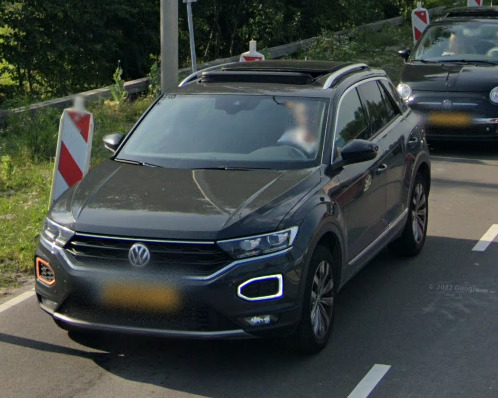
This is the only country to have yellow on both front and back plates to my knowledge, so it is a telltale sign that the car is from Netherlands or that you're currently there. I have seen yellow license plates in Belgium before but I don't know if that's the standard there.
On to the next thing, we have (old) portugal backplates that have a yellow strip in addition to their blue strip.

This is the old design but is still present on many vehicles in the country.
France has something similar, but it is two blue strips on them like so:

Italy also has this as well as on front plates

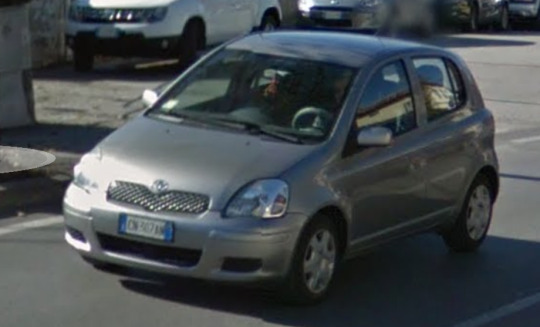
Mexico is most distinct for their shorter, stubbier front plates compared to most others. It might be hard to tell, but here's a comparison of Mexico license plates with United States license plates
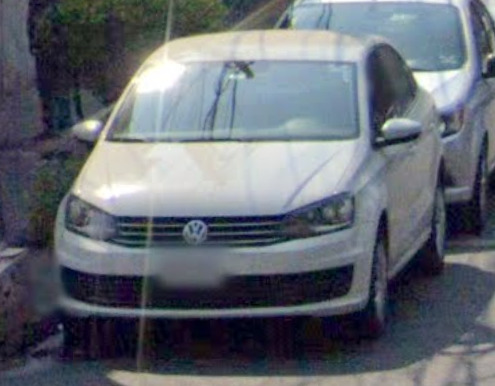

Interestingly enough, there's a lot of similarities between three different South American license plates in that they all have the blue strip at the top. I don't know why this is the case because I'm not very learned on its history. It makes sense for EU license plates to be the same, but I'm not sure why these are the same or why Chile, Peru, Bolivia don't follow the same format.



In addition to this, it's worth noting that Colombia's license plates are yellow as well, and I believe the only country in South America to have yellow? but I could be entirely wrong, my knowledge is limited to whatever has google streetview coverage.

For a change of pace, in Bhutan they have very distinct red license plates like this one
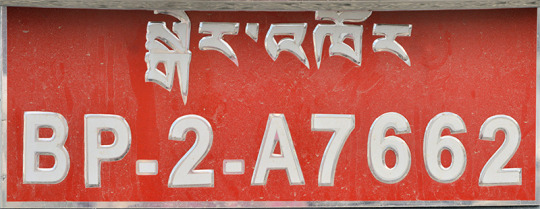
Fun fact about bhutan: there is a lot of phallic imagery present on many houses
And as a side note, Israel has yellow plates as well

Laos has yellow plates too, not many countries in Southeast Asia have yellow license plates to my knowledge besides Japan (though only some of them are yellow)


I could go over areas like Russia and Ukraine but they are just white license plates and aren't that remarkable. Before I hit the image limit I want to cover US license plates as they're quite distinct, starting with the only yellow plates, Alaska and New Mexico.

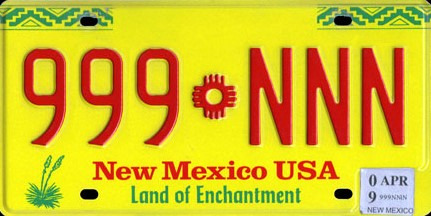
Bear in mind that plate designs have changed countless times and I could have an entirely separate post showcasing some of the most striking changes I've seen. For comparison, here are more from New Mexico


Alaska has a variant with a kodiak bear on it

New York is more orangeish


This state loves to move in circles and features Arches National Park

Wyoming is the most stereotypical yeehaw cowboy plate
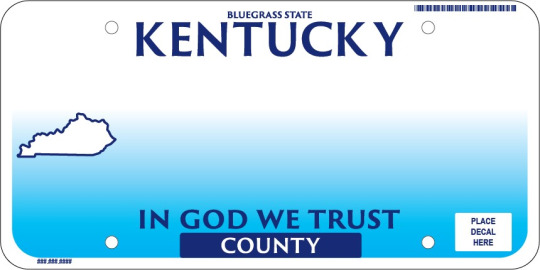
Kentucky has nothing.

Arizona features everything that made me fall in love with the state. The mountains, the desert, the cacti, the sunrise, it's perfect.
Bonus round: Canada. NT has a polar bear

Nunavut has a polar bear

I'm out of images but there's plenty of other variants you can see on Geohints, two separate sections for most of the world as well as a separate section for just US plates
I feel like there's more I could cover but with the image limit it's a little difficult, but some other details I can say is that Manitoba for some reason has Hebrew on their license plates, Czechia license plates' first 3 digits represent the region they were manufactured in, a lot of countries like Peru and Bolivia have their flag on the license plate as well.
I hope you learned something about license plates
28 notes
·
View notes
Note
Eu quero aprender mais xingamentos em espanhooooool
O que o we*n/we*na naquele video do nepotismo chileno significa?????
"Weón/weona is a slang word from Chile that can mean different things depending on the context. It can be a way of calling someone an idiot, a dumbass, an imbecile, or just plain stupid. But with a little bit of finesse it can also be a term of endearment. It can mean dude, chick, friend, pal or mate"
44 notes
·
View notes